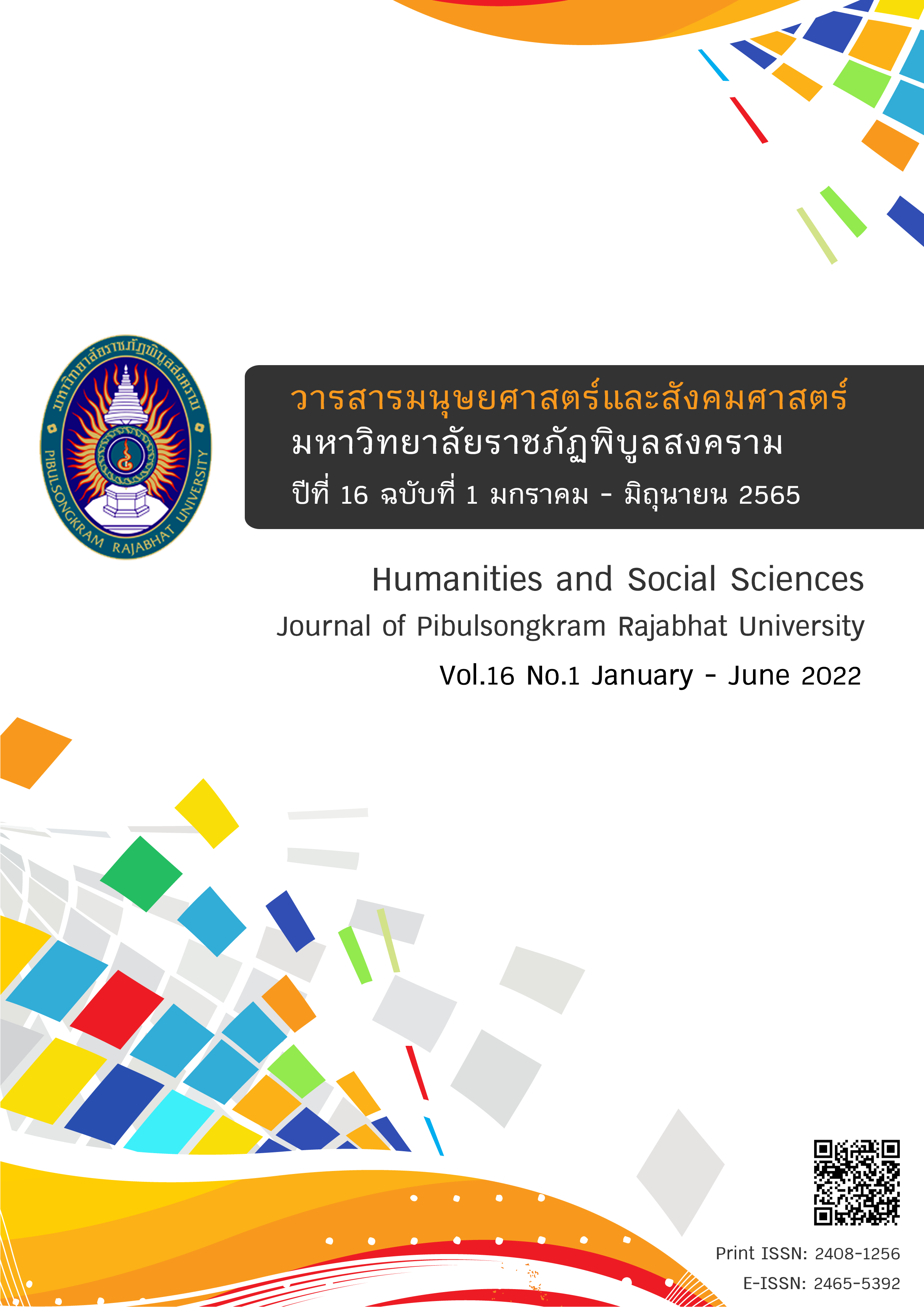An Analysis of Noun Phrase Structures Used in the Bangkok Post Headlines
DOI:
https://doi.org/10.14456/psruhss.2022.17Keywords:
Noun Phrase Structure, Noun Phrase, English HeadlineAbstract
The study aimed to analyze the structures of noun phrases and find out the frequency of occurrence of each structural type of noun phrases used in the English headlines including sports news, economic and business news, criminal news, and political news in the Bangkok Post and to examine the features of English headlines of sports news, economic and business news, criminal news, and political news in the Bangkok Post, which further contributes for useful guidelines on teaching development. The samples used for this study were 588 English headlines of sports news, economic and business news, criminal news, and political news in the Bangkok Post, which were selected by purposive sampling. The instruments consisted of two structural types of noun phrases based on the classification of Banpho (2000) : ‘Pre-modifier + Noun’ and ‘Noun + Post-modifier’. The data were analyzed and then compared among different English headlines. The research statistics for data analysis was frequency and percentage. Overall, the results revealed that two structural types of noun phrases occurred in the English headlines of four genres of news. ‘Pre-modifier + Nouns’ were found in 359 English headlines with the percentage of 62.35% and ‘Noun + Post-modifiers’ were found in 229 English headlines with the percentage of 37.65%. According to each genre of news, it was found that ‘Pre-modifier + Noun’ was mostly used in the Political news, with the percentage of 67.94%, followed by the Criminal news, with the percentage of 66.7%, and the Economic and Business news, with the percentage of 65.54%. As for the Sports news, ‘Noun + Post-modifier’ was mostly used with the percentage of 50.8%. In terms of ‘Pre-modifier + Noun’, the findings showed that Adjective Phrase was used the most with the percentage of 42.21% and Adverb Phrase was used least with the percentage of 0.83. The findings further revealed that Adjective Phrase appeared mostly in the Sports news and the Economic and Business news with the percentage of 46.15% and 45.36%. In terms of ‘Noun + Post-modifier,’ the findings showed that Prepositional Phrase was mostly used with the percentage of 74.72%, and Apposition was least used with the percentage of 1.19%. The findings further revealed that Prepositional Phrase mainly appeared in the Sports news with the percentage of 81.91%.
References
Banpho, W. (2000). English Syntax I. Bangkok : Rajabhat Institute Thonburi.
Biber, D., Grieve, J., & Iberri-Shea, G. (2009). Noun phrase modification. In G. Rohdenburg, & J. Schlüter (Eds.), One language, two grammars? Differences between British and American English (pp. 182-193). (Studies in English language). Cambridge University Press.http://www.cambridge.org/gb/knowledge/isbn/item1174282/?site_locale=en_GB
Biber, D., Johansson, S., Leech, G., Conrad, S., Finegan, E., & Quirk, R. (1999). Longman grammar of spoken and written English (Vol. 2). London: longman.
Bonyadi, A., & Samuel, M. (2013). Headlines in newspaper editorials: A contrastive study. Sage Open, 3(2), 2158244013494863.
Bunyarat, P. (2020). A STUDY OF HEADLINE STRUCTURES IN ENGLISH LANGUAGE NEWSPAPERS. Life Sciences and Environment Journal, 21(1), 156-168.
Charuchinda R. (2003). An Analysis of Noun Phrases Used in the Bangkok Post Front-Page Headline. Research Paper, M.A. (Business English for International Communication). Bangkok: Srinakharinwirot University.
Chavanachid, P., & Sripicharn, P. (2019). A Corpus-informed Study of Move Structures and Linguistic Features of Press Release and Corresponding News Reports of Products and Services in the Thai Business Context. Journal of Studies in the English Language, 14(1), 25-92.
Chovanec, J. (2003). The uses of the present tense in headlines. Theory and Practice in English Studies, 1, 83-92.
Dor, D. (2003). On newspaper headlines as relevance optimizers. Journal of pragmatics, 35(5), 695-721.
Ifantidou, E. (2009). Newspaper headlines and relevance: Ad hoc concepts in ad hoc contexts. Journal of Pragmatics, 41(4), 699-720.
Mirabela, A., & Ariana, M. (2010). The stylistics of advertising. Fascicle of Management and Technological Engineering, (2), 183-188.
MONOCOMBLE, F. (2018). The deviant syntax of headlinese and its role in the pragmatics of headlines. E-rea. Revue électronique d’études sur le monde anglophone, 15(2), https://doi.org/10.4000/erea.6124
Phunsawat, S. (2015). News Reader from English Learning from Newspaper (2 ed.). Bangkok: T.G.R.E. Book Center.
Prateepchaikul, N. (2010). Headline writing techniques in general news articles. Presented in partial fulfillment of the requirements for the master of arts degree in English at Srinakharinwirot University.
Reah, D. (1998). The language of newspapers. London: Routledge.
The Missing Graph. (August, 2018). UK Newspaper Front Page Headlines Review for July 2018 (infographic). Retrieved from https://themissinggraph.wordpress.com/2018/08/06/uk-newspaper-front-page-headlines-review-for-july-2018-infographic/
Walters, P. (2017). Beyond the inverted pyramid: Teaching the writing and all-formats coverage of planned and unplanned breaking news. Teaching Journalism & Mass Communication, 7(2), 9-22.
Younus, L. L. (2019). Analysis of the Structure of Scientific News Headlines in Online Newspapers. Journal of the College of Education for Women, 30(4), 19-28.
Downloads
Published
How to Cite
Issue
Section
License
Copyright (c) 2021 Humanities and Social Sciences Journal of Pibulsongkram Rajabhat University

This work is licensed under a Creative Commons Attribution-NonCommercial-NoDerivatives 4.0 International License.
Any articles or comments appearing in the Journal of Humanities and Social Sciences, Rajabhat Phibulsongkram University, are the intellectual property of the authors, and do not necessarily reflect the views of the editorial board. Published articles are copyrighted by the Journal of Humanities and Social Sciences, Rajabhat Phibulsongkram University.









